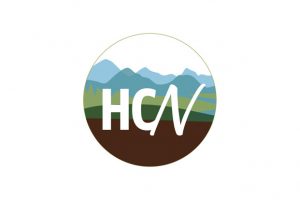What Is Intramuscular Stimulation?
Intramuscular stimulation (IMS) is a dry needling technique that is a neurophysiological evidence- based treatment. This treatment technique requires an effective manual assessment of the body, in particular, the neuromuscular system. It is mainly used for the diagnosis and treatment of myofascial pain syndromes. Myofascial pain syndrome is a chronic pain condition that occurs in the musculoskeletal system when there is no obvious injury or inflammation.
IMS doesn’t specifically target the painful area, rather the assessment technique helps to identify the cause and attempts to relieve the symptoms from there. Often the pain is blamed on “unwell nerves”, the nerve roots in the peripheral nervous system that branch off our spinal cord and feed the structures in our periphery. This is referred to as neuropathic pain or a radiculopathy.
In the 1970’s, Dr. Chan Gunn studied chronic pain and discovered a pattern in which “patients who have pain, but no obvious sign of injury, generally have subtle but discernable signs of peripheral nerve involvement” (The Gunn Approach to the Treatment of Chronic Pain, 2007). In other words, when he studied patients with tennis elbow symptoms, he found that tender points at the elbow related to cervical spondylosis (osteoarthritic changes in the neck) and therefore found that treating the neck and not the elbow provided relief.
When a nerve is affected (due to spinal compression, arthritis, a pinched nerve root, disc bulge, tight spinal muscles) the structures that nerve innervates are deprived of the fuel and food necessary for the maintenance of cell function. These structures (muscles, tendons, ligaments, bone, blood vessels, skin, organs) then become highly irritable and develop abnormal sensitivity. This results in observable motor (strength), sensory (sensation) and autonomic dysfunctions (skin changes, hair loss, nailbed integrity).
When muscles are deprived of nutrients and the chemicals that enable muscles to contract and relax, tight bands form within the muscle belly. These tight bands within the muscle cause tension on the tendons, restrict nutrient flow within the muscle, compress joints and restrict movement. This causes pain! The aim of IMS is to target these deep muscle bands with an acupuncture needle. As the needle penetrates the muscle it stretches the muscle fibres and triggers a local twitch reflex. This is felt as a spontaneous twitch in the muscle and a deep ache sensation. This mechanical stimulation of the needle into the muscle and the subsequent twitch response, stimulates the flow of electrical energy necessary for healing to begin. This effect has been shown to increase the electrical current along our muscle cell membranes locally as well as regionally within that nerve pathway. For example, the nerve root from the 3rd lumbar vertebrae in our lower back innervates our quadricep (thigh) muscle. When the needle stimulates the muscles at the 3rd lumbar vertebrae in our lower back, the local muscles are released as well as the quadricep muscles that nerve supplies. Often people feel pain, aching, or numbness along the thigh area that can be attributed to changes at the spinal level that is supplying those upper groin and thigh areas.
The effects of IMS have been shown to be mechanical (target tight muscles and stimulate receptors), electrical (depolarize cell membranes), chemical (reduce local inflammation), and trophic (improve the nutrients to target structures). Overall this stimulates a new pathway of healing and breaks the cycle of chronically tight muscles that compress nerves, blood vessels, and joints such as the spine and peripheral joints (shoulders, elbows, hips and knees).
If this cyclical pattern of pain, tightness, sensory changes and dysfunction sound familiar to you and have persisted for no apparent reason, you may be suffering from neuropathic chronic pain. A thorough neuromuscular assessment and diagnosis of your pattern of pain may help you begin your journey to healing. We would love to help you start this journey!
Jennifer Gordon (BSc. PT, AFCI, BA Kin)
Physiotherapist, Bragg Creek Physiotherapy
www.braggcreekphysio.com
























